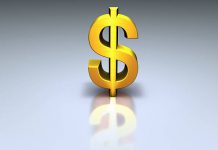Canadian inflation accelerated to 4.1% year-on-year (y/y) in August from 3.7% in July, above the median analyst estimate for 3.9%. Gasoline prices, up a whopping 32.5% relative to a year ago, added almost a percentage point to the headline number.
Excluding gasoline, prices were up 3.2%, accelerating from 2.8% in July. Durable goods prices were a major contributor to that acceleration, up 5.7% y/y (from 5.0% in July). Services prices also accelerated, rising 2.7% (from 2.6% in July).
Seasonally adjusted, month-on-month price growth edged slightly lower to a still robust 0.4%, down from 0.6% in July. Most major categories saw gains, with only health and personal care (-0.15%) and recreation, reading and education (-0.17%) pulling back.
All three of the Bank of Canada’s core inflation metrics moved higher in the month. The CPI-trim rose to 3.3% (from 3.1%) and CPI-Median to 2.6% (from 2.5%), and the CPI-common measure to 1.8% (from 1.7%). Taken together, the three measures averaged 2.6%, the highest level since December 2008.
Key Implications
Canadian inflation isn’t quite as high as its American counterpart, but will likely to remain elevated over the remainder of this year. Supply constraints will continue to put upward pressure on usually benign goods prices, while a normalization in categories impacted by the pandemic will also add to the headline.
Downside risks to the economy related to the pandemic may not do as much to slow inflation, as they lead to greater substitution toward goods consumption and prolong supply challenges in tradeable goods around the world.
The recovery has been slowed by third and fourth waves of the virus, but not reversed. As long as growth is only postponed, a forward looking central bank with a firm mandate of price stability will continue to ease off the monetary accelerator. The Bank of Canada will pay attention to inflation pressures and continue to message the gradual withdrawal of monetary support over the next year.













